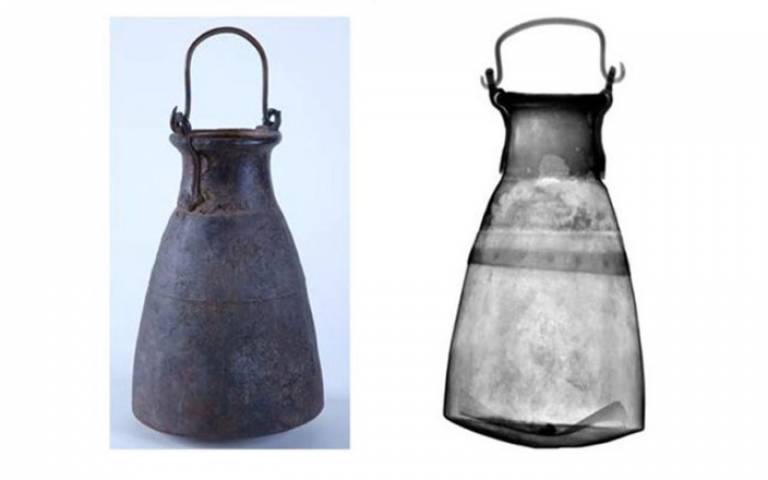Student Laura Arcidiacono co-authors paper on neutron and gamma techniques on Egyptian grave goods
10 May 2018

SEAHA student Laura Arcidiacono has co-authored a paper ‘Egyptian grave-goods of Kha and Merit studied by neutron and gamma techniques‘ in journal Angewandte Chemie.
The intact burial assemblage of Kha and Merit was discovered in 1906 in Egypt when the Italian Archaeological Mission (MAI) located the underground tomb; its entrance was hidden by a landslide in the necropolis of Deir el-Medina. The tomb represents the richest (more than 500 objects) and most complete non-royal burial assemblage dated back to the New Kingdom (1425-1353 BC). It includes sealed alabasters and pottery, metallic vassels, wooden boxes and chests, food and oils containers, powders and precious perfumes. This was the tomb of the “Work director” Kha and his wife Merit.
Artifacts from these grave goods preserved at the Mueseo Egizio in Turin were studied by Laura and an international team of researchers through a combination of non-destructive and non-invasive neutron and gamma techniques, such as: neutron imaging, neutron diffraction and prompt gamma activation analysis. The results showed unprecedented morphological reconstructions of the inner parts of two alabaster and metallic vases, their isotopic and phase composition, providing new information about unknown content of the vases and their functions.
Links
Image: a photograph of the metallic situla (S.8228) and its neutron radiography. The alabaster vase is 11 cm in height and has a maximum diameter of 10 cm, while the metallic situla is 26 cm in height and has a maximum diameter of 16 cm of max. Used with permission of Laura Arcidiacono.
 Close
Close

